Creasing tiles

Creasing tiles are plain clay tiles without nibs or camber. Made from the same Etruria marl clay as our roof tile range, they have very low water absorption and excellent durability making them ideal for exposed situations, where they will be subject to high degrees of weathering and rising or penetrating damp.
They are traditionally used to add decorative finishes to brick and stonework in applications such as cappings and copings, external cills, corbelling, arches, chimneys and decorative quoins.
Their beautiful natural clay colour and thin format makes them a great choice for adding detail to a huge variety of projects including extensions, external walling, fireplaces, patios and even garden edging.
We are increasingly seeing them being used by designers "on edge" in cladding applications and to provide decorative detail in patios.
Dreadnought supply creasing tiles in three Staffordshire colours, Red, Blue Brindle and Brown Multi
Case Studies
A community project with creasing tiles

St Oswalds School in York celebrated 250 years with a new heritage seating space using Dreadnought creasing tiles to display the original foundation stones from 1771 and 1846. Designed by parent and architect Ian Hayton, the new seating area is nestled in a newly planted garden area, and the Dreadnought quarry tiles, stacked on top of each other, elegantly frame the original foundation stones bringing a delicate texture and detail to the space. beneath the stones and the timber bench, a number of ceramic tiles, designed by the children are sealed into the structure.
Creasing tile cladding
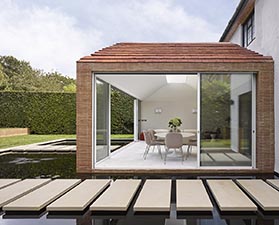
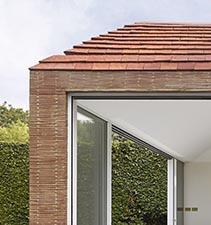
A 1950's house in Hertfordshire has been remodelled and extended by Dominic McKenzie Architects. The new extension relects the Arts and Crafts styling of the original house. It is clad in stacked creasing tiles and the new roof features Dreadnought's handmade deep red clay roof tiles. Full details
Decorative stacked creasing tiles
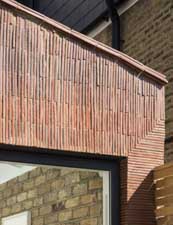

Yard Architects took inspiration from Arts and Crafts detailing on lintels and designed a new extension on a London house using stacked creasing tiles as cladding. It was important for the design that the creasing tiles had no camber and were as flat as possible and Dreadnought's were ideal for this. A blend of Staffordshire red and brown brindle creasing tiles were used to reference the Victorian brickwork on the street side of the house. Full details on Ketley Brick website>>
Decorative paving detail with creasing tiles
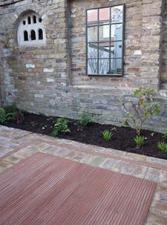
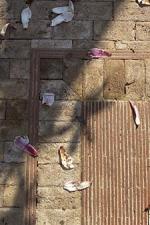
We love to see designers being creative with our products and Ula Maria Studios have certainly done that here in this elegant, residential garden project in Brixton. They have used Ketley creasing tiles on edge to provide paving detail and combined them with both reclaimed bricks and reclaimed yorkstone. Full details on Ketley Brick website>>
Technical Info
There are no standards specifically covering Creasing Tiles, however our creasing tiles conform to BS EN 1304:1998 which covers Clay Roof Tiles and Fittings and they exceed the specification in terms of transverse strength and water absorption.
|
|
Creasing Tiles |
|
Colour |
Staffordshire Blue Brindle, Staffordshire Red, Staffordshire Brown Multi |
|
Size |
265x 165 mm |
|
Thickness |
11mm |
|
Weight per tile |
1.05 kg |
|
Weight per pack |
1.20 Tonnes |
|
No of Tiles per pack |
1000 |
|
Finish |
Smoothfaced |
|
Material |
Etruria Marl |
|
Transverse Strength |
880N |
|
Water Absorption |
3.9% |
|
Freeze/thaw resistance |
Conforms to BSEN 539-2 |
Environmental Info
Place of Manufacture: Brierley Hill, UK
Environmental Management: ISO 14001 Download Certificate
Quality Management: ISO 9001 Download Certificate
Life Cycle: BRE 'A+' rating
Freeze Thaw Testing to in excess of 400 cycles Download Freeze Thaw Test Certificate >>
Energy: Fired in gas kilns to 1130 degrees
Raw materials: Etruria Marl Clay from our local quarry in Brierley Hill, sand
Lifespan: > 60 years. Second hand tiles that have been on roofs in excess of 100 years often sell for more than new tiles on the 2nd hand market
Recyclability: Can be crushed and used as aggregate and/or as an inert bulk fill
Packaging: We keep packaging to a minimum using wooden pallets. We do not shrink wrap or use plastic straps.
Find out more about Dreadnought Tiles approach to sustainability
Laying Instructions
Laying Instructions
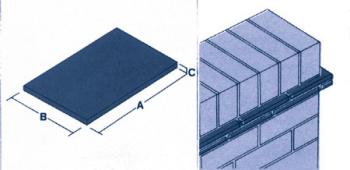 Creasing Tiles should be laid with a broken bond and a minimum lap of 75mm. The joint width between tiles should not exceed 10mm in all applications.
Creasing Tiles should be laid with a broken bond and a minimum lap of 75mm. The joint width between tiles should not exceed 10mm in all applications.
When cutting creasing tiles, a mechanical disc cutter is recommended over hand cutting particularly when used in exposed areas, as this will provide a neater appearance and help avoid cracks that can reduce the performance of the creasing tile.
For freestanding walls where creasing tiles are used under brick cappings, day courses of clay tiles should be laid with staggered joints in a 1:1/4:3 mortar and a minimum projection from the wall of at least 45mm.

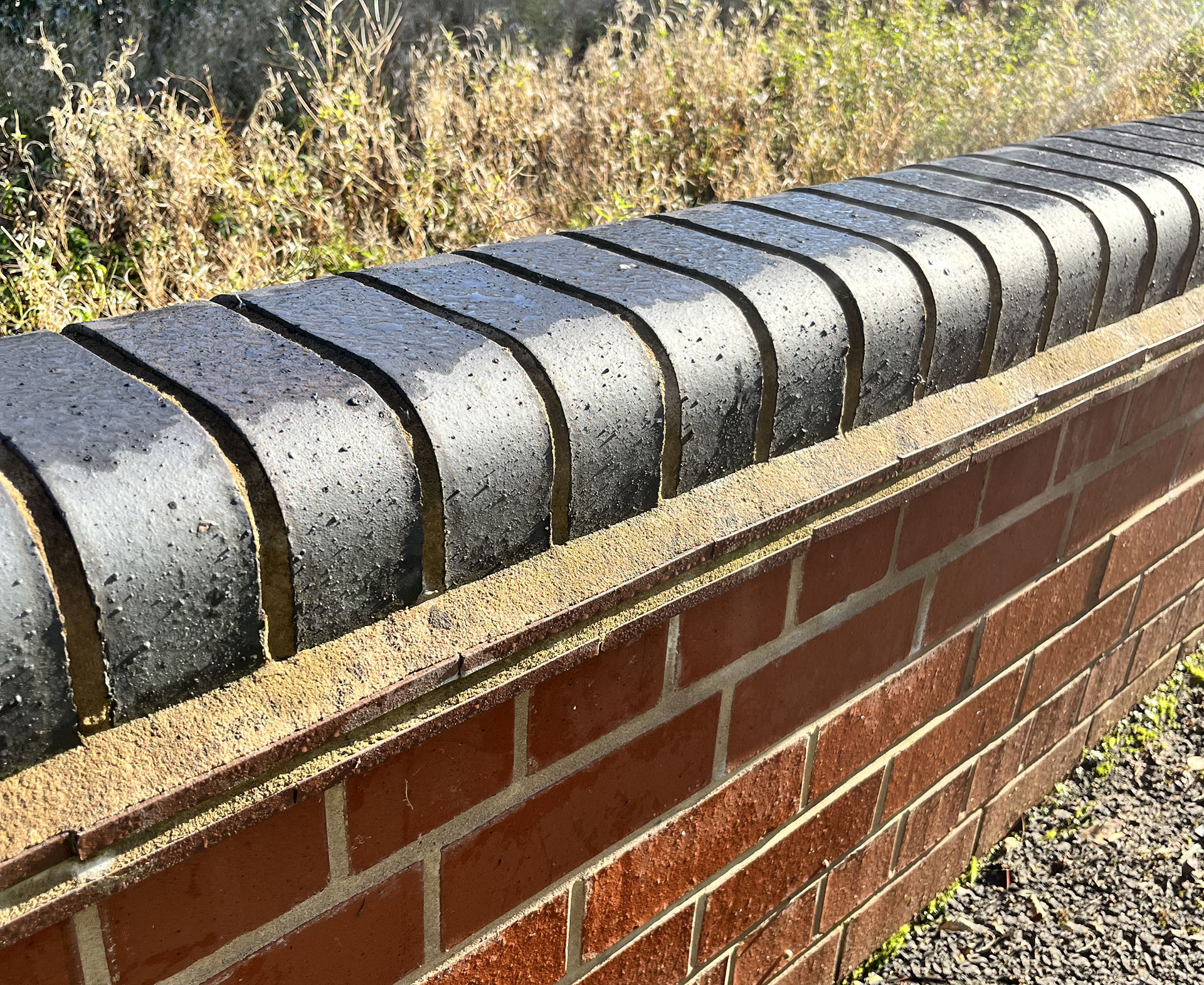
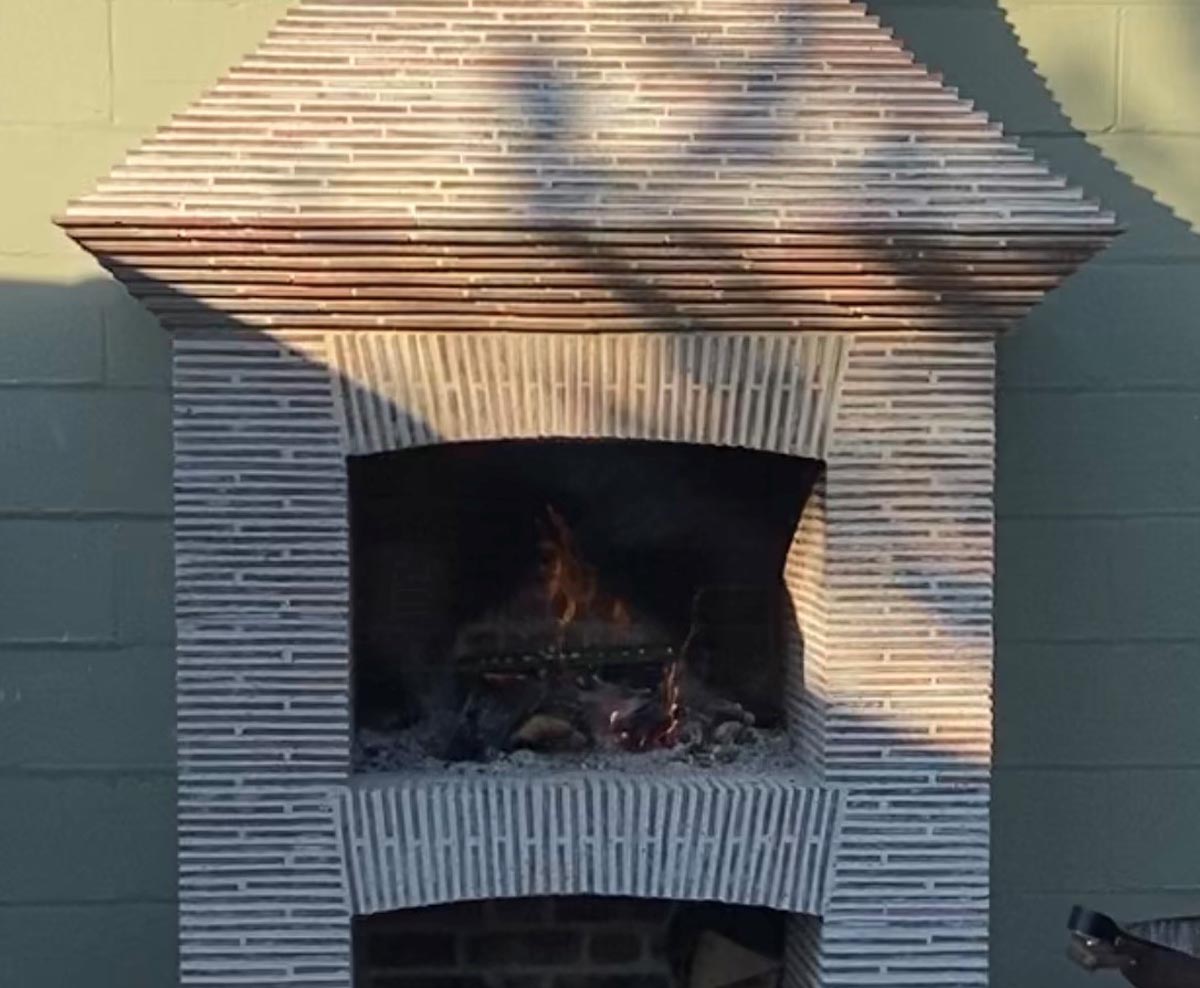
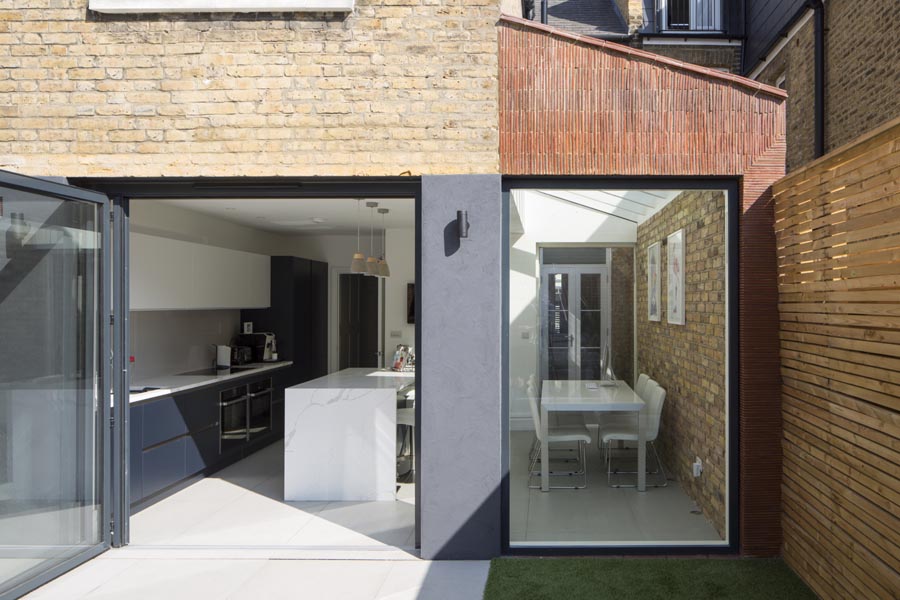
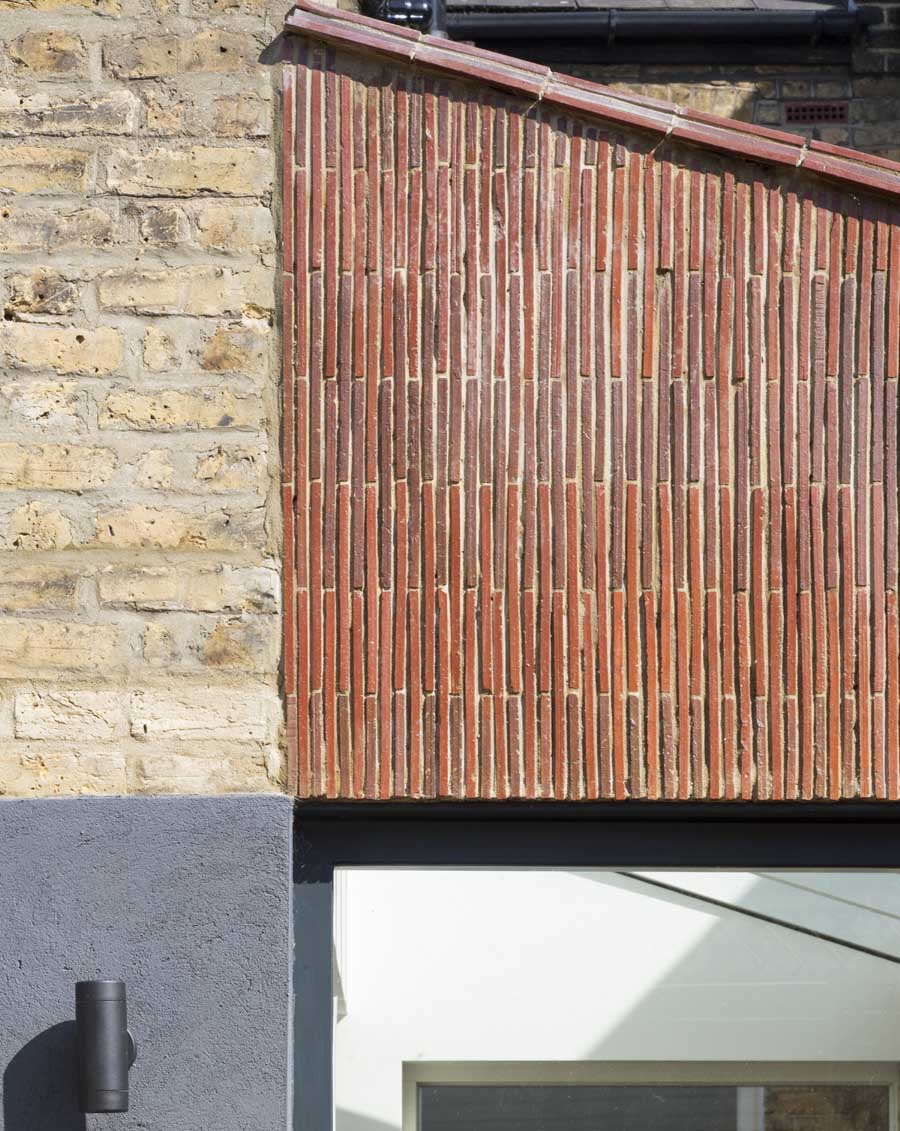
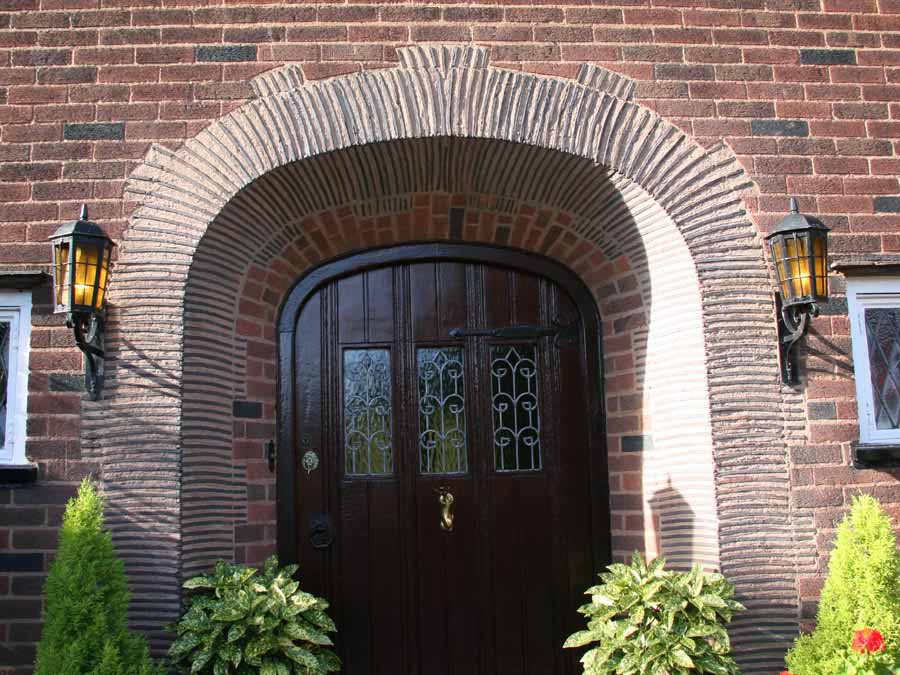
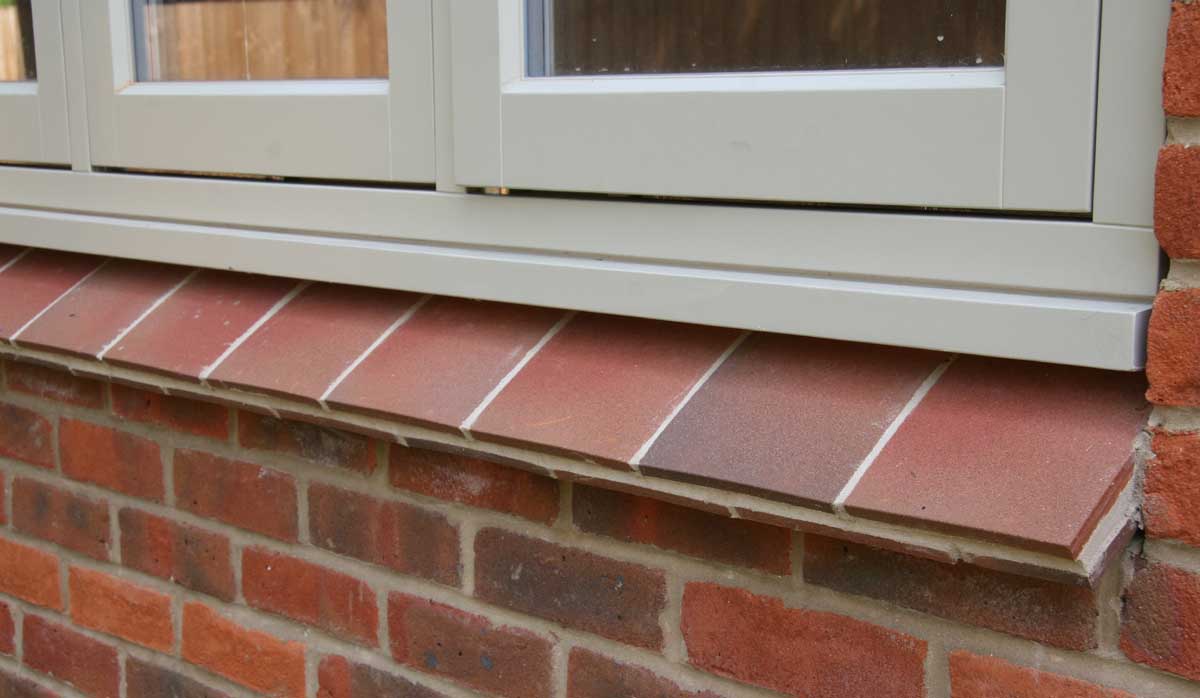
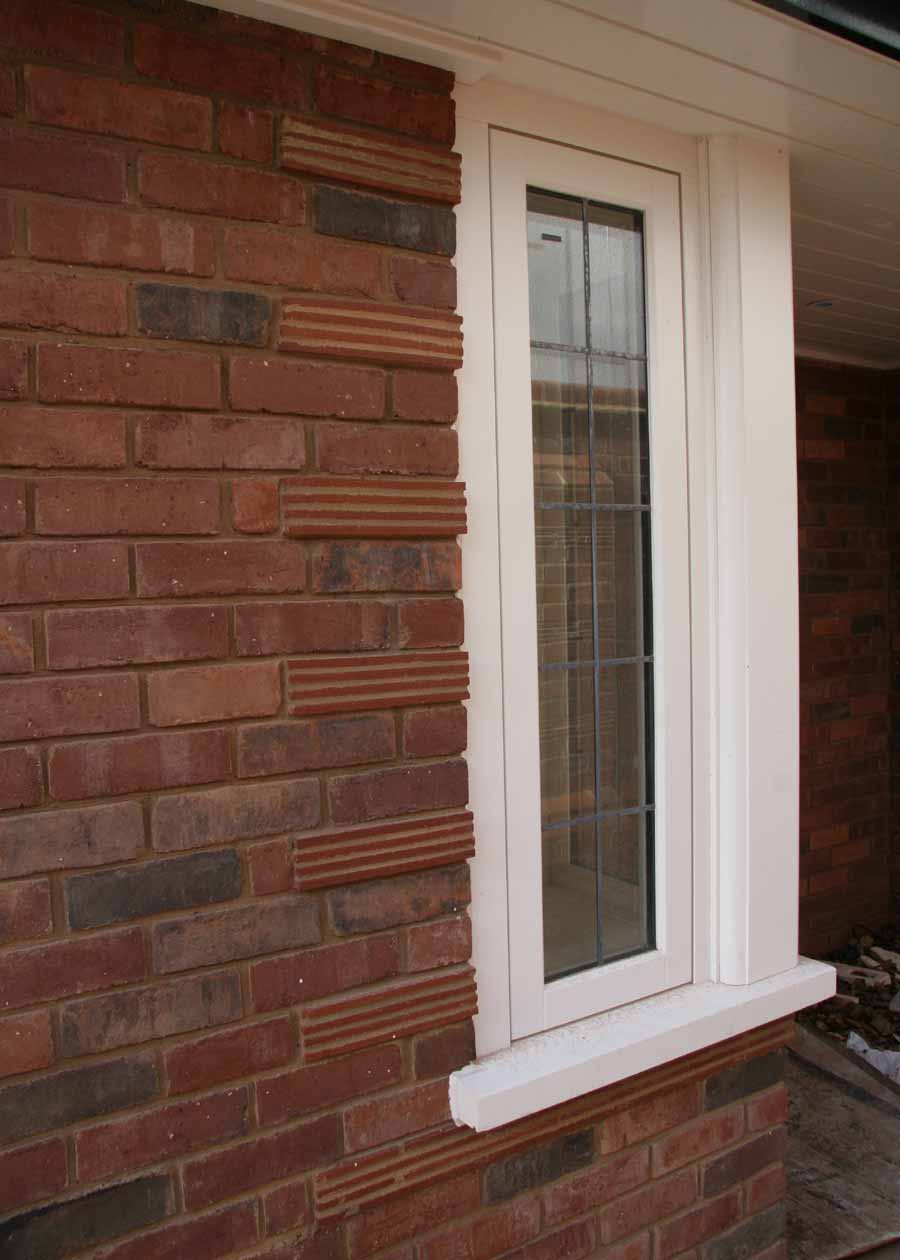
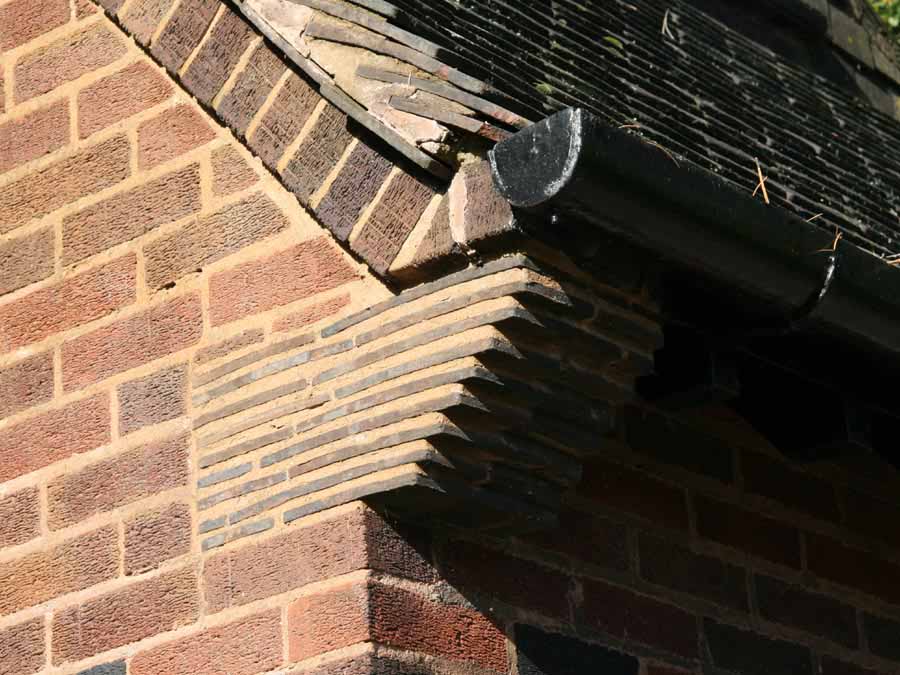
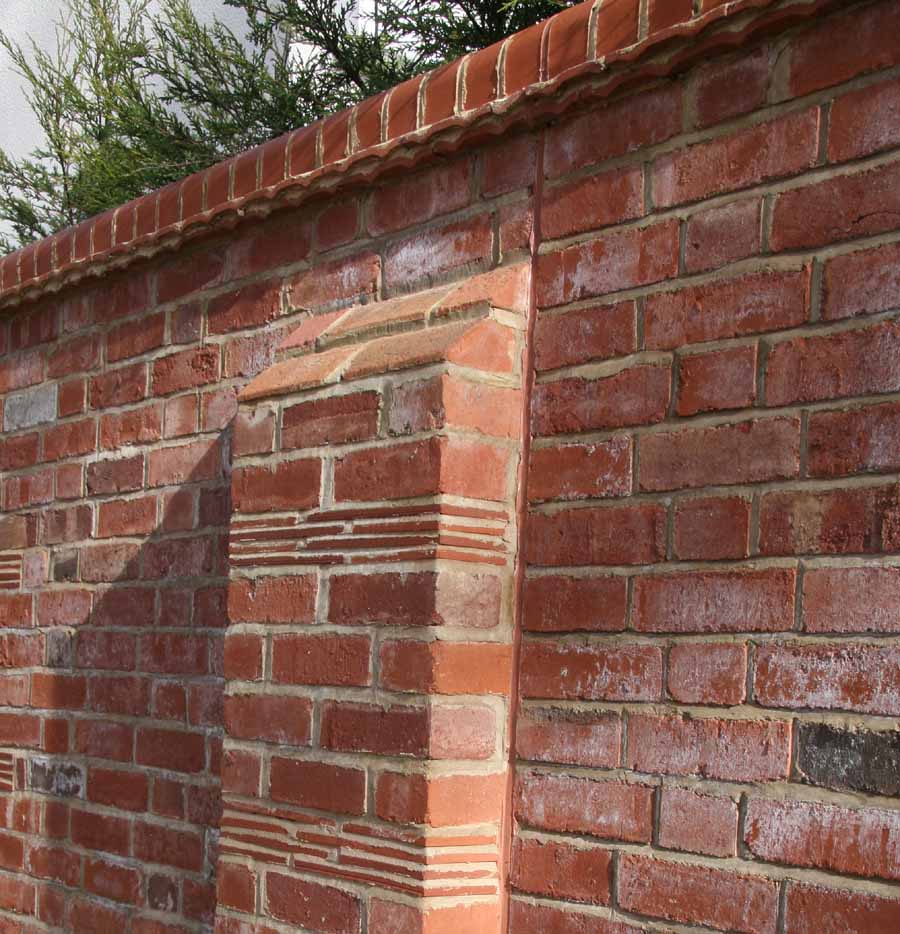
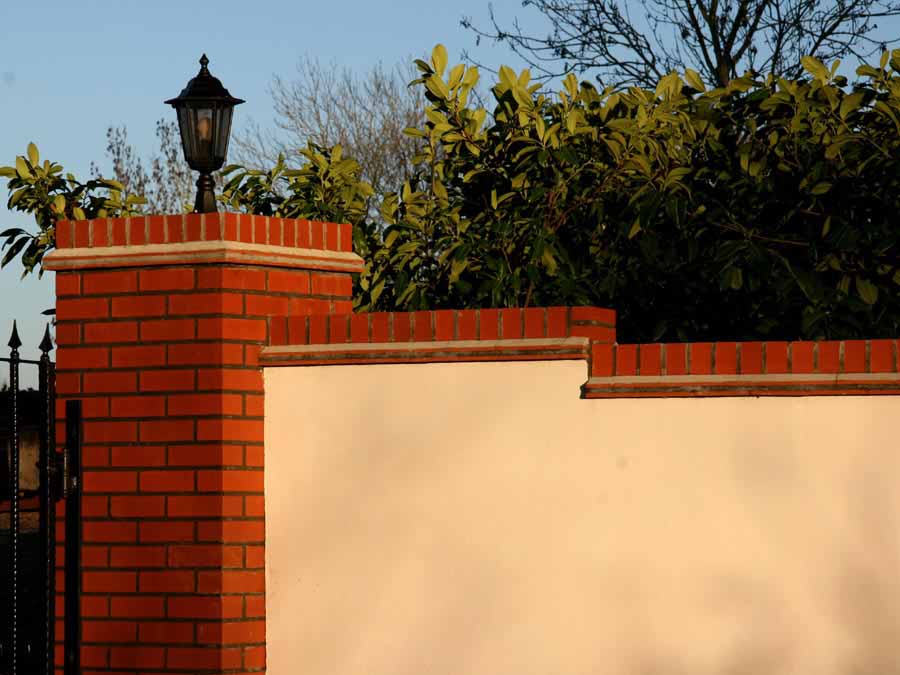



-A.jpg)


